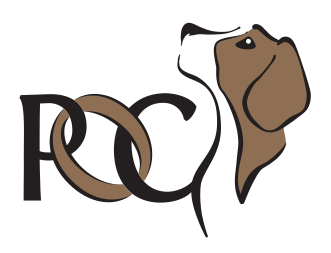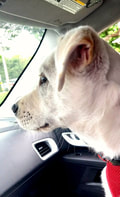 Summer time is often family time, and in some families, that means your dog may be joined by other dogs or kids they don't live with. Some advance preparation can help ensure a happy time for all. You will see I tend to err on the side of caution, as I find that if the first few gatherings go well, future gatherings are easier and less management is required as the expectations have been set from the start. ArrivingOften emotions run high when we first get together. People are busy greeting each other, often hugging and exclaiming. Kids and dogs arriving may be full of energy after the trip. This can be a prime time for canine chaos. Therefore, consider how your dog might react in advance. If you think they will be extra wound up from the excitement, then consider getting the initial greetings out of the way before involving your dog in the mix. Perhaps a leash would be a good idea to prevent any jumping up or accidentally scaring kids - some dogs get very excited and forget their size, potentially knocking over kids from enthusiasm. If dogs are arriving, you may have the added dynamic of one dog feeling like another is coming onto their turf. The ideal way to introduce dogs would be to take them on a parallel walk together. Walking gives them other things to focus on besides each other, which reduces the social stress as they get to know one another through gradual exposure while also sniffing and investigating the environment. Leashes can keep an over-exuberant younger dog from jumping on an older dog and allow them time to settle. Then you can return to the house/cottage together. If your dog is going to be out of sorts right away seeing another dog when on leash, then I would recommend addressing that in advance by contacting a trainer for help teaching your dog better coping skills for when they see another dog. Being Together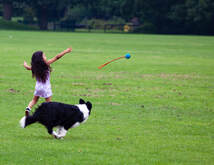 There are a few factors to consider when having multiple dogs or dogs and kids together
Helpful Skills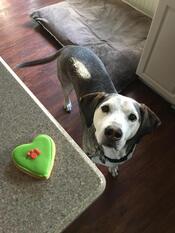 Teaching your dog some cues in advance can really pay off when it comes to integrating them into family gatherings. Some of my favourites are below.
Tip: Naps can Help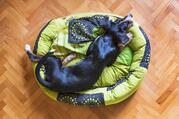 We've had extended family get togethers with 7 dogs in the house ranging in age from 4 months to 11 years and from small to giant in size. One of the biggest take aways is that they don't all need to be together all of the time. Sometimes it is helpful to separate them for short periods of time to allow for rest - both the dogs and the people! And we were fortunate to have the space to do so.
Tip: Things to consider packingWhen packing for family gatherings I often include some longer lasting chews (i.e. bully sticks, cheek rolls, ox tails) along with my usual Kongs and food dispensing toys. This allows me to make separation time more fun, or, if the situation is appropriate give chews to occupy the dogs when the people want to settle for a quiet time. Since my dogs wolf down food in bowl in no time at all, sticking it in food dispensing toys makes it last a little longer and gives them a puzzle to occupy their mind. A leash or two. Even if your dog is normally off leash, in a different place or exciting situation you may want the ability to put them on a leash. They don't take up much space if you end up not using one. A bed or mat to create a place for your dog to settle. It doesn't need to be fancy, but this can be extremely helpful if things get hectic. A baby gate, crate or x-pen. Ways to create a private space, or different zones if needed. As the dogs get used to each other, or used to the kids, they may no longer be needed. But in the beginning it can help ensure a peaceful gathering. Here's to Summer!
|
Categories
All
Archives
May 2024
|
Online Learning Class Schedule Puppy Classes Manners Classes Sport Classes Scent Classes Agility Classes Private Lessons
Copyright 2020 Positively Obedient Canines
